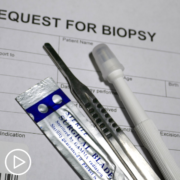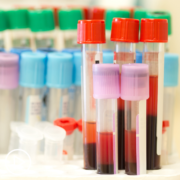What Treatments Are There for Myeloma Patients Who Relapse After CAR T?
What Treatments Are There for Myeloma Patients Who Relapse After CAR T? from Patient Empowerment Network on Vimeo.
Do multiple myeloma patients who relapse after CAR T have other treatment options? Dr. Sikander Ailawadhi from the Mayo Clinic explains patients who typically receive CAR T-cell therapy and options for those who relapse after CAR-T therapy.
See More from START HERE Myeloma
Related Programs:

|

|

|
Transcript:
Lisa Hatfield:
So this next question has to do with the sequencing of treatments, which, again, speaks to the fact that it’s super important to see a myeloma specialist, but the question is what treatments are available for myeloma patients who relapse after CAR T?
Dr. Sikander Ailawadhi:
Very, very important question, and unfortunately a tough situation that we are dealing with because CAR T initially has been used for later lines of therapy as it is currently FDA-approved. With time, hopefully it will start making it may sooner in the treatment also, but when a person…when a patient has had treatment with CAR T, generally, they have already had treatment with most of the standard available drugs prior to CAR T, because the way CAR T is currently approved is the patient has to have at least four prior lines of therapy, and generally, at least in the U.S. system, with the first three to four regimens or lines of therapy, we’ve already seen and exhausted most of the available drugs.
So you can imagine most CAR T, there is less drug availability that the patient has not had before or may not be resistant to, but if the CAR-T response lasted long enough, sometimes we are recycling some of the drugs after previously used, and the patient may respond to them again.
Another thing to think about in that place is from my standpoint, clinical trials are extremely important and patients must seek clinical trial options, as you mentioned, again, important to see a specialized myeloma center, but one of the drugs that was approved in 2022 bispecific antibody, teclistamab (Tecvayli), and there are some other related by specific antibodies which have actually shown some benefit despite the fact that they also target BCMA, which CAR T targets, but patients who had prior BCMA therapy still had a very good response rate to, for example, teclistamab or some other…bispecific antibodies in clinical trials, so I don’t say that everybody who’s been treated with a BCMA CAR T should go immediately to a BCMA and bispecific may not be the best option in all cases.
But sometimes recycling older drugs in certain different combinations, clinical trials or options promising options like bispecific antibodies. We do have more options today than even what we had a year ago for patients who are progressing after CAR T-cell therapy.






